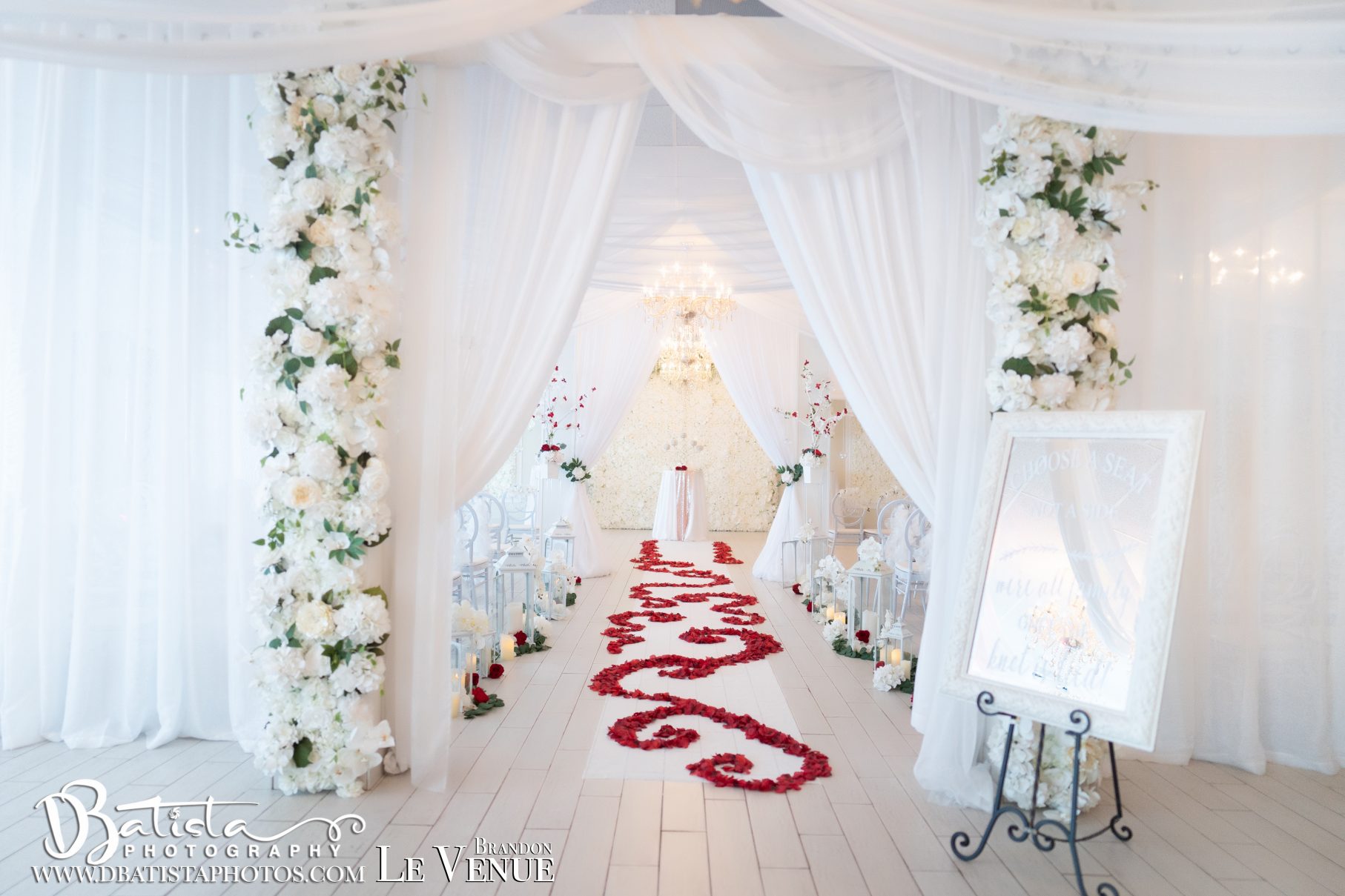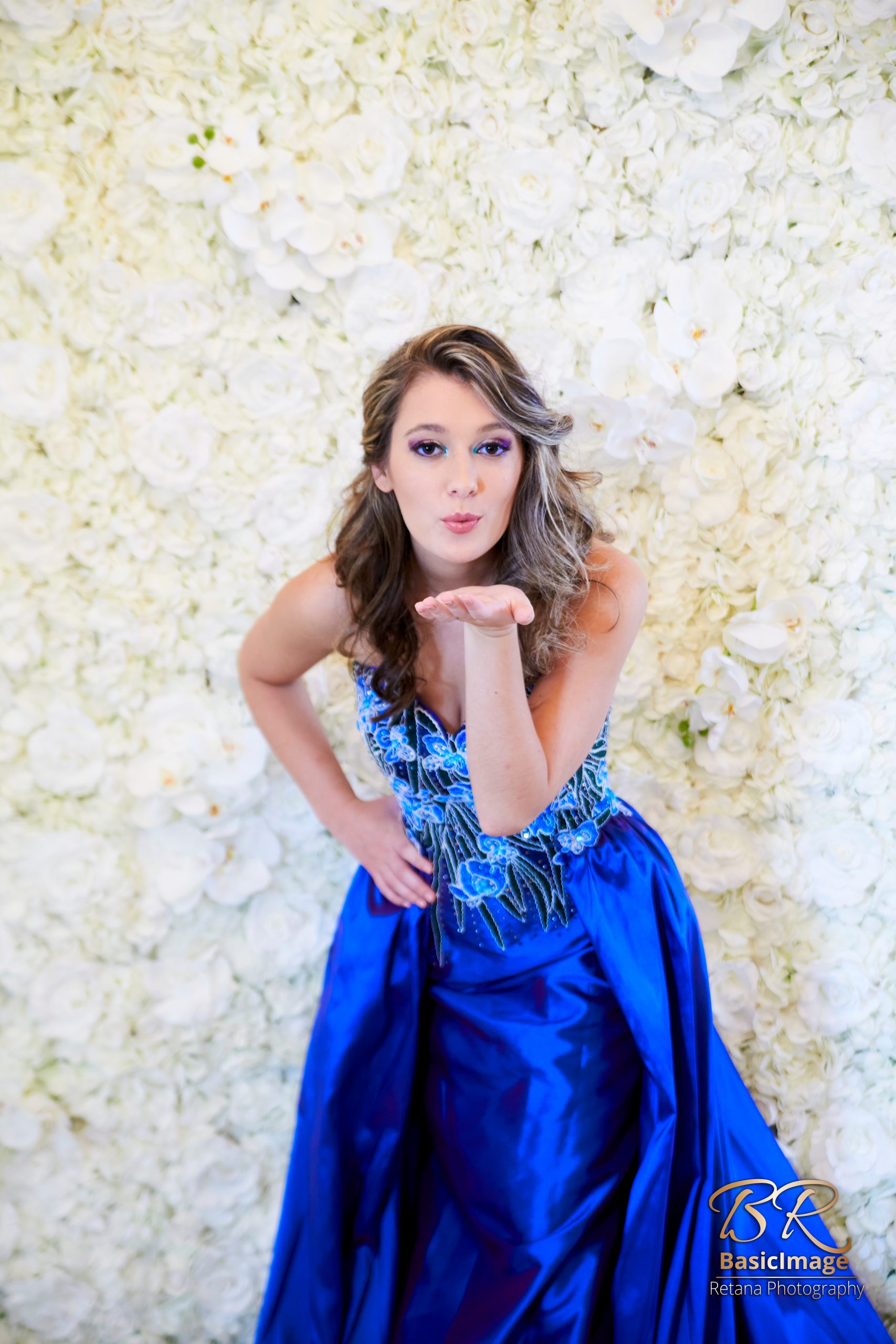- You didn’t have much money for your first wedding, and you want a more elaborate wedding.
- You got married and only a few people present, so you’d like to say wedding vows in front of lots of family and friends.
- You’ve had some rocky times in your relationship, and would now like to reaffirm your commitment to one another.
- You simply think it would be romantic.
Examples of Vow Renewal Invitation Wording
- If You Are Hosting It Yourself: The honor of your presence is requested at the reaffirmation of the wedding vows of (partners/spouse name ) date of event (Sunday, May 20th 1885) OR Please join us as we renew our wedding vows and celebrate 25 years together (partners/spouse name ) Date of event (Saturday, May 27 2020)
- If Your Children Are Hosting It:The children of (partners/spouse name ) Request the honor of your presence at the vow renewal ceremony of their parents Date of event ( Friday, Jun 21, 2024)
Wedding Vows at a Vow Renewal Ceremony
- You’ll probably want to say something a little different than first-time brides and grooms would. Many people write their vows. If you need a little inspirations try researching the following topics online.
-
-
- How to write the perfect personalized vow renewal
- Non-traditional wedding vows
- Romantic vows for wedding ceremony
- How to write a whimsical or silly wedding vows
- Wedding ring exchange vows
- How to renew your marriage vows
-
Types of Ceremonies
- Sign the Ketubah: While a ketubah is directly related to Jewish wedding ceremonies, the act of signing a “marriage contract”—promising to love and support each other unconditionally in your union—is adaptable for all nuptials, regardless of faith. Traditionally, two special witnesses sign the document (this is a great honor!) before it is read aloud, which happens after the ring exchange.
- Wrap Yourselves in Blankets: This custom derives from Native American culture and involves wrapping a quilt around the newlyweds’ shoulders to symbolize warmth and togetherness as they take on the future together. The ancient Cherokee tradition, however, is a bit more involved. First, both parties are wrapped (individually!) in blue blankets, before an officiant blesses the union. Next, the couple is shrouded in a single white blanket. The blue represents the elements of the couple’s respective past lives and the white symbolizes the couple’s dedication to filling their new lives with peace.
- Exit Under an Arch of Swords: This tradition, which is reserved for military weddings, goes beyond the symbolic commitment newlyweds have for each other. The practice is a pledge of fidelity and protection from the military to the couple; service members literally shelter the newly married couple beneath the sword or saber arch as they exit the ceremony.
- Have a Sundial Ceremony: On the Aran Islands of Ireland, the Celtic sundial ceremony remains, to this day, an integral part of a wedding. The couple is invited to touch fingers through the sundial’s hole—this serves as both a symbol and confirmation of their union. Witnesses may then offer the newlyweds well-wishes by passing a silk scarf through the hole (three times!) as those dreams are spoken out loud.
- Have a Wine Ceremony: A wine ritual symbolizes blending two lives (and two families!) into one. Some couples choose to drink wine from the same cup—a practice performed in most Catholic and Jewish ceremonies—while others prefer to pour two types of wine into one glass before sharing. This “blending” is symbolic of your union and the life you’ll create together.
- Wine Box ceremony: A wine box ceremony is a non-religious wedding ritual in which a bottle of wine is enclosed in a box so that it can be opened by a couple on their one year anniversary . Some couples opt to add an extra layer of meaning by including love letters to each other and sealing them in the box alongside the wine
- Receive “Tilak”: During traditional Indian weddings, it is customary for the groom—at the head of the baraat, or groom’s procession—to be welcomed by the bride’s family upon arrival at the ceremony site. The bride’s mother applies tilak, or red vermilion powder, to her future son-in-law’s forehead to welcome him into her family and to protect him from evil.
- Pass the Rope:Passing around a rope to each attendee allows them to take part in the matrimony and signals their commitment to supporting the marriage. After the last guest has held the rope, it should be returned back to the couple, who braid it together (this symbolizes their union to each other and, if they’re religious, to God).
- Light a Unity Candle: This Judeo-Christian tradition is probably the most well-known wedding ritual that symbolizes unity. The bride and groom each hold a lit candle and combine their flames to light a third, larger candle. Sometimes the bride and groom’s parents take on this task instead to symbolize the union of their families. You can also get the guests involved by displaying candles in the ceremony entrance and inviting friends and family to light one and say a blessing as they enter.
- Try a Sand Ceremony: Sometimes referred to as a “blending of the sands” ceremony, each person pours a small container of sand (often two different colors) into a larger vessel to symbolize their “coming together” as a couple. This practice is particularly meaningful if you’re tying the knot on a beach or want to use sand from a hometown or favorite vacation spot.
- Circle the Groom (or Bride!): In Jewish tradition, the bride circles the groom seven times to break down any barriers between them. Today, rather than the bride circling around her groom, the couple often encircle around one another.
- Participate in a Crowning: It’s customary in Greek Orthodox culture for brides and grooms to appoint koumbaroi, attendants who place the wedding crowns on the couple’s heads and the rings on their fingers. The crowns, known as stefana, are connected by ribbon and therefore serve as a symbol of the bride and groom’s union, as well as their status as queen and king of their family.
- Do a Lasso Ceremony: In traditional Mexican, Filipino, and Spanish culture, couples can celebrate unity through a lasso ceremony, or el lazo ceremony. After the couple recites their vows, an officiant, parent, or relative drapes two linked rosaries or one floral rope across the bride and groom’s shoulders in the form of a figure eight, which represents the couple’s unity. The couple then wears the lasso for the duration of the service until the person who placed it on the couple removes it and gives it to the bride as a reminder of their commitment to each other.
- Gather ‘Round: Perfect for smaller weddings, this take on a Quaker tradition involves inviting guests to form a circle together with the bride and groom. They may also be asked to share their thoughts on the couple. (You can give them a heads up so they can prepare their thoughts ahead of time!)
- Have a Handfasting: Participate in the ancient Celtic practice of “handfasting,” or tying hands together. The bride and groom hold opposite hands (so their arms make a figure eight—representing eternity). Then, their hands are tied together with ribbon to symbolize a union. You could even use heirloom fabric to make it even more meaningful.
- Tie the Knot (Literally!)
- In this old Irish tradition, the bride and groom ties a fisherman’s knot with ribbon to symbolize a bond that, rather than break under pressure becomes stronger.
- Jump a Broom:The “jumping the broom” ritual originated in the early 19th century, when enslaved African Americans weren’t allowed to formally marry. Instead, to unite, the tradition was to lay a broom on the ground and jump over it together. Today, the act represents a “brushing away” of the past in order to start clean.
- Plant a Tree
- If you’re getting married outside, consider planting a sapling—it represents growth, something you and your new spouse will do (a lot of!) together. During the ceremony, the bride and groom should place soil from two separate containers on top of the planting, representing two individuals coming together as one.
- Or Pot a Plant: This works for outdoor ceremonies, of course, but it allows couples throwing an indoor reception get in on the planting fun. Take a cue from this bride and groom, who potted and watered a plant together during their ceremony to represent the joining of their families.
- Pass the Rings Around: Include guests in the ceremony by having each person bless your bands. Send one ring down one side of the aisle and the other down the opposite, giving every guest a chance to hold our rings and bestow their blessings and positive thoughts toward your marriage.
- Create a Time Capsule: Place meaningful items—like a bottle of wine created during the year you first met, a favorite set of poems, or a poignant keepsake—into a box and help each other nail it shut. This modern ceremony is about togetherness, both at the time of the capsule’s creation (take turns hammering!) and at it’s opening, on your one year anniversary.
- Cleanse with Water: The act of washing your spouse’s feet (or their hands, if you prefer!) symbolizes the release of any past emotional blocks, so both parties can enter the marriage with open hearts. This cleansing ceremony works especially well in outdoor weddings where messiness is not a concern. Indoors, couples can hold their hands over a bowl or share a goblet of water to symbolize the purity of love.
- Paint a Picture: If you and your groom are artistic—or your officiant is—express your emotions during your union with a collaborative piece of art. This couple’s officiant, an artist, led the pair through a painting.
Book your wedding or vow renewal today with LeVenue!









